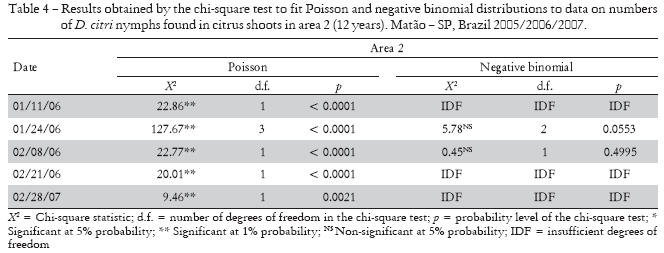The psyllid Diaphorina citri Kuwayama is one of the most important pests of citrus, mainly because it is the vector of the bacterium that causes huanglongbing (HLB) or 'Greening' disease. To study the spatial distribution of nymphs and adults of this pest, an experiment was carried out in two 'Valencia' sweet orange orchards, four and 12 years of age, established in Matão, central area of São Paulo state, Brazil. The following dispersion indices were used to study pest aggregation in the citrus plants: variance/mean relationship (I), index of Morisita (Iδ), coefficient of Green (Cx), the <img border=0 width=16 height=16 src="../../../../../img/revistas/sa/v67n5/a08form10.gif" align=absmiddle>exponent of negative binomial distribution, common k (<img border=0 width=16 height=16 src="../../../../../img/revistas/sa/v67n5/a08form10.gif" align=absmiddle>c) and Taylor's Power Law for each sampling. The negative binomial distribution was more representative of the spatial distribution of this psyllid, for both nymphs and adults. For most samplings, psyllid nymphs found in branches and adults caught in traps had an aggregated distribution.
Citrus sinensis; psyllid; probability distributions; negative binomial distribution


















